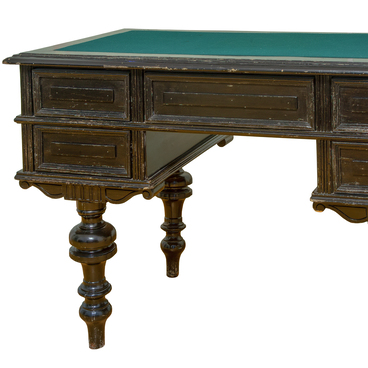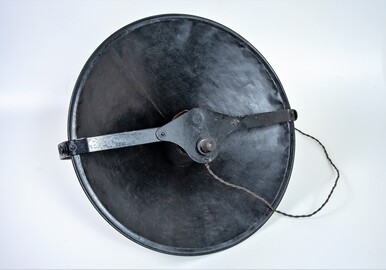The exhibition presents a samovar with the stamp ‘The Association of the Steam Samovar Factory of V. S. Batashev’s heirs in Tula’.
Stepan Batashev opened his first factory for the production of metal items in 1819. And twenty years later he launched a new business — samovar making. By the end of the 1840s, his factory employed 13 people, who produced about 360 samovars a year. The cost of one product in the factory was only 7 rubles, so that even ordinary people with a low income could afford a Batashev samovar. For comparison, the average monthly salary of a minor official in those years was about 40-45 rubles.
In 1861, there was a fire at the factory. Batashev died in it, but his sons continued the business. They began to actively advertise their products and take part in different exhibitions, thanks to that all the Russia learned about the Batashev samovars. Nine years later, the factory’s products received a silver medal at an exhibition in St. Petersburg.
In 1874, more than 200 people worked for the Batashev brothers, and their production increased to 4140 samovars per year. By 1876, the enterprise grew into a manufactory, but they decided to produce samovars in limited quantity, not more than 6000 pieces per year. This circumstance has greatly affected their cultural value: with time the Batashev samovars have become a collector’s rarity.
In 1896 at the All-Russia Nizhny Novgorod exhibition, Batashev’s heirs received the highest award — the State emblem, approved by the Ministry of Finance. As time passed, a lot of imitators appeared who produced samovars with fake stamps. However, they could not compare to the real products of the Batashevs: the Batashev samovars were made of the first-class copper sheets.
In 1906, the Elementary School of the Batashev brothers was opened, where the classes were devoted to samovar production. And in 1909 the Association of steam samovar factory of Batashev heirs appeared. It was this factory that produced the samovar that is housed in the museum today. After the October Revolution, the Batashev factory was nationalized and transferred to the Tula Ammunition Factory.
Stepan Batashev opened his first factory for the production of metal items in 1819. And twenty years later he launched a new business — samovar making. By the end of the 1840s, his factory employed 13 people, who produced about 360 samovars a year. The cost of one product in the factory was only 7 rubles, so that even ordinary people with a low income could afford a Batashev samovar. For comparison, the average monthly salary of a minor official in those years was about 40-45 rubles.
In 1861, there was a fire at the factory. Batashev died in it, but his sons continued the business. They began to actively advertise their products and take part in different exhibitions, thanks to that all the Russia learned about the Batashev samovars. Nine years later, the factory’s products received a silver medal at an exhibition in St. Petersburg.
In 1874, more than 200 people worked for the Batashev brothers, and their production increased to 4140 samovars per year. By 1876, the enterprise grew into a manufactory, but they decided to produce samovars in limited quantity, not more than 6000 pieces per year. This circumstance has greatly affected their cultural value: with time the Batashev samovars have become a collector’s rarity.
In 1896 at the All-Russia Nizhny Novgorod exhibition, Batashev’s heirs received the highest award — the State emblem, approved by the Ministry of Finance. As time passed, a lot of imitators appeared who produced samovars with fake stamps. However, they could not compare to the real products of the Batashevs: the Batashev samovars were made of the first-class copper sheets.
In 1906, the Elementary School of the Batashev brothers was opened, where the classes were devoted to samovar production. And in 1909 the Association of steam samovar factory of Batashev heirs appeared. It was this factory that produced the samovar that is housed in the museum today. After the October Revolution, the Batashev factory was nationalized and transferred to the Tula Ammunition Factory.



